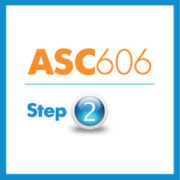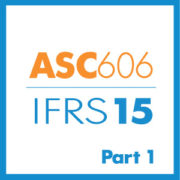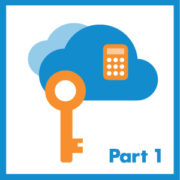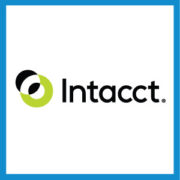ASC 606 Step-by-Step Part 2: Performance Obligations
The effective date for ASC 606 is rapidly approaching, with public companies needing to complete the transition to the new standard by the end of this year, and private companies having just under 18 months to make the move. In today’s deep-dive, we would like to explore in detail the second step of the five-step process: Identifying performance obligations.
Background: ASC 606/IFRS 15
We’ve covered a lot of the basics in our initial introduction to the topic, including who ASC 606 affects, a brief overview on the five steps, and a look at how ASC 606 will affect different industries, but today we would like to introduce a deeper look at each step:
- Identify Contract(s) with a Customer
- Identify Performance Obligations in the Contract (Today)
- Determine the Transaction Price
- Allocate the Transaction Price to the Performance Obligations in a Contract (August)
- Recognize the Revenue When (or as) the Entity Satisfies a Performance Obligation (September)
We will cover each stem and what it means over the next few months and share with you some resources on preparing. Following last month’s deep dive on identifying contracts, we would today like to take a look at Step 2: Identifying Performance Obligations in the Contract.
ASC 606 Deep Dive Step 2: Identifying Performance Obligations within a Contract
Biggest Impacts: Aerospace and Defense, Licensors, Real Estate, Software, Telecommunications
Overview
Step 2 is a complicated one and one that requires a lot of thought and a lot of modifications to processes. As defined in 606-10-05-4, identifying performance obligations consists of identifying distinct goods and services promised.
(606-10-05-4) Identify the performance obligations in the contract—A contract includes promises to transfer goods or services to a customer. If those goods or services are distinct, the promises are performance obligations and are accounted for separately.
A good or service is distinct if the customer can benefit from the good or service on its own or together with other resources that are readily available to the customer and the entity’s promise to transfer the good or service to the customer is separately identifiable from other promises in the contract. (See paragraphs 606-10-25-14 through 25-22.)
What is a Performance Obligation?
A performance obligation is the unit of account for revenue recognition. When determining a performance obligation an entity will assess the goods or services promised, identifying a performance obligation as:
- A good (that is distinct)
- A service (that is distinct)
- A bundle of goods or services (that is distinct)
- A series of distinct goods or services that are substantially the same and that have the same pattern of transfer to a customer.
We will discuss distinction in the next section, and the concept of adding goods/services to a series below that.
Criteria for Being Distinct
In the prior section, we discussed that performance obligations are distinct goods, services, or bundles of goods/services.
Is It Distinct?
However, what does it mean to be distinct? Two things. To be considered distinct, the answer must be yes to BOTH of the following questions:
- Capable of Being Distinct: Can the customer benefit from the good or service on its own or together with other readily available resources?
- Distinct within the Contract: Is the entity’s promise to transfer the good or service separately identifiable from other promises in the contract?
If the answer to both of these is yes, the good/service/bundle is a performance obligation. If the promised good or service is determined to not be distinct, an entity should continue to combine it with other promised goods or services until it becomes distinct.
Examples of Distinct Goods or Services (606-10-25-18)
Distinct goods and/or services, depending on a contract, could include (but are not limited to) the following (606-10-25-18):
- Sale of goods produced by an entity (for example, inventory of a manufacturer)
- Resale of goods purchased by an entity (for example, merchandise of a retailer)
- Resale of rights to goods or services purchased by an entity (for example, a ticket resold by an entity acting as a principal, as described in paragraphs 606-10-55-36 through 55-40)
- Performing a contractually agreed-upon task (or tasks) for a customer
- Providing a service of standing ready to provide goods or services (for example, unspecified updates to software that are provided on a whenand-if-available basis) or of making goods or services available for a customer to use as and when the customer decides
- Providing a service of arranging for another party to transfer goods or services to a customer (for example, acting as an agent of another party, as described in paragraphs 606-10-55-36 through 55-40)
- Granting rights to goods or services to be provided in the future that a customer can resell or provide to its customer (for example, an entity selling a product to a retailer promises to transfer an additional good or service to an individual who purchases the product from the retailer)
- Constructing, manufacturing, or developing an asset on behalf of a customer
- Granting licenses (see paragraphs 606-10-55-54 through 55-65)
- Granting options to purchase additional goods or services (when those options provide a customer with a material right, as described in paragraphs 606-10-55-41 through 55-45)
Customer Benefit
A customer can benefit from a good or service in accordance with paragraph if the good or service could:
- Be used, consumed, sold for an amount that is greater than scrap value, or otherwise held in a way that generates economic benefits.
- Be used in conjunction with readily available resources
For even more information on the determination of whether a good or service is distinct, see page 43-48 of the KPMG guide to Revenue Recognition.
How to Account for a Series of Goods and/or Services under the new Revenue Recognition Standard
In many contracts, an entity may promise to deliver a series of goods and/or services that are substantially the same to its customer. In order for series of goods or services to be combined into a single performance obligation under the new standard, the following three criteria have to be met:
- The goods or services are substantially the same
- Each distinct good or service in the series is a performance obligation satisfied over time
- The same method would be used to measure progress toward satisfaction of each distinct good or service in the series.
For more, see page 57-58 of the KPMG Guide.
Additional Considerations
Additionally, there are a few considerations that need to be made—including the existence of implied promises, the process of shipping goods to the customer, and a US-only consideration regarding immaterial goods or services in the context of a contract.
Implied Promises
Promises to transfer a good or service can be explicitly stated in the contract or be implicit based on reasonable expectations that the entity will transfer goods or services to the contract.
One such example of this implied promise would be a software company who sells software through a reseller, but still provides free telephone support to the customer, a promise expected by the customer and the reseller. This would constitute a performance obligation between the software company and the reseller if:
- The reseller and the customers aren’t related parties
- The promise to provide telephone support is considered a service that meets the definition of a performance obligation when control of the product transfers to the reseller.
Administrative Tasks
Administrative tasks (e.g. transfer of serial numbers/product keys) are not considered performance obligations.
Shipping and Handling
Entities reporting under GAAP can elect to treat shipping and handling activities as fulfillment costs (as opposed to separate performance obligations) depending on whether they are performed before or after a customer takes control of the goods or services.
Immaterial Goods or Services in the Context of the Contract
Entities reporting under GAAP are not required to identify promised goods or services that are immaterial in the context of the contract as performance obligations. One such example of this would be the creation of a toll-free line for all customers, which would not be distinct to one single contract, would be insignificant within the scope of the transaction (<1%).
An example of this and further clarification can be found on pages 60-62 of the KPMG guide.
Satisfying Performance Obligations
An entity shall recognize revenue when (or as) the entity satisfies a performance obligation by transferring a promised good or service (that is, an asset) to a customer. An asset is transferred when (or as) the customer obtains control of that asset.
There are determinations to be discussed on whether the performance obligation will be satisfied over time or at a point in time—we will cover this in part 5 of this series, and you can learn more on page 27-31 of the full text.
Conclusion
Next month, we will discuss the process of determining the transaction price in part three of our series—who it will affect, what you will need to do, and determinations you will need to make, but until then, we welcome you to learn more about the implications of ASC 606 on your business by looking at our overviews and deep dives:
- ASC 606 Overview Part 1
- ASC 606 Overview Part 2
- How Will ASC 606 Affect Different Industries?
- Deep Dive Step 1: Identify Contracts and Thresholds
- Deep Dive Step 3: Determine the Transaction Price (Coming Soon)
- Deep Dive Step 4: Allocate Transaction Price to Performance Obligations (Coming Soon)
- Deep Dive Step 5: Recognize the Revenue (Coming Soon)
Important Guides
Even if we’re posting monthly blogs leading up to the effective date, you should already be looking at transition methods and other industry-specific considerations that you need to make. To address this, we’ve compiled a list of resources for companies looking to prepare for the upcoming standard:
- Analyst Report: Intacct Leads the Way in ASC 606 and IFRS 15 Revenue Recognition
- Six Rules for ASC 606 Readiness
- ASC 606 and Subscription Businesses—Why Compliance Can’t Wait
On Demand Webcasts: ASC 606/IFRS 15
Intacct recently presented a three-part series on the new standards, which you can view on-demand.
- Part 1: New FASB Rev Rec Standards, Actions You Should Take Now!
- Part 2: The Impending Impacts of ASC 606 on Subscription Businesses
- Part 3: Master Your Transition to ASC 606 and IFRS 15
We welcome you to peer through the full text, the AICPA guidance, and to get in contact with us to learn more about preparing for ASC 606 with outsourced accounting services and/or a new accounting software designed with new RevRec Standards in mind.











Leave a Reply
Want to join the discussion?Feel free to contribute!